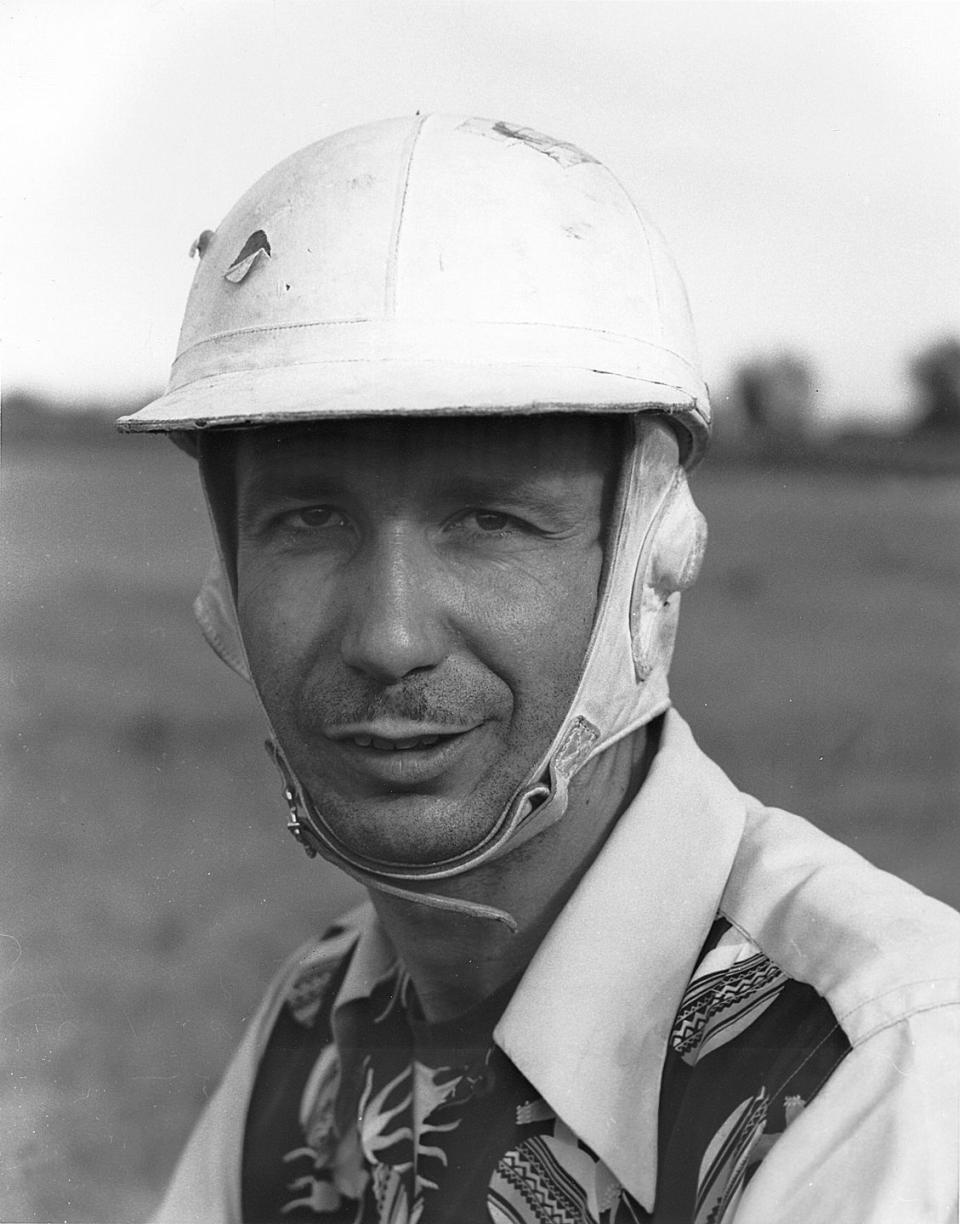NASCAR's First Race West of the Mississippi Was Simply 'Fabulous' in '51

In 1951, NASCAR truly went “coast to coast” with the addition of Carrell Speedway, a half-mile dirt track in Gardena, Calif., for a pair of races.
Marshall Teague was one of the few Cup regulars who was talked into making the cross-country trip to race in NASCAR's first event in California.
Another Cup race, which was won by Tim Flock, was held on that same day in Mobile, Alabama.
When Bill France Sr. pulled together a web of drivers, car owners, racing officials and track operators to form NASCAR in 1947, one of his goals was to create a truly national stock car series.
His attempts in that arena were evident early on. In the first season (1949) of what became the Cup Series, three of the eight races—at Langhorne, Pa.; Hamburg, N.Y. and Pittsburgh—were outside the stock car heartland of the Southeast.
In 1950, the second season, France expanded the schedule to 19 races and added two more New York tracks, two in Ohio and one in Indiana.
But it wasn’t until 1951 that NASCAR truly went “coast to coast” with the addition of Carrell Speedway, a half-mile dirt track in Gardena, Calif. On April 8 of that year, Marshall Teague, one of the top drivers in the sport’s early years, won a 200-lap race at Carrell.

Another Cup race was held on that same day in Mobile, Ala. Most of France’s “regulars” were in that event; the California race field was largely made up of West Coast regulars.
Teague was the exception. At France’s request, Teague, a resident of Daytona Beach, Fla., made the cross-country trip and made it worthwhile by leading all 200 laps. Johnny Mantz, who had won the landmark Southern 500 at Darlington Raceway the previous season and was the promoter of the Gardena race, was second. George Seeger was third.
Only 20 drivers participated in the race, and sketchy reports indicate that only six finished. Teague’s Hudson Hornet, operating with at least minor support from the car manufacturer (a novelty in those days), clearly had the rest of the field covered.
The event was significant because of the location and because of NASCAR’s stretch to California, an offensive that would continue across the years.
“Bill recognized the fact that for NASCAR to become a powerhouse it had to be national,” said Ken Clapp, NASCAR’s long-time Western operations director. “Going to California was an enormous initiative for him. It was tying East and West.”

won seven Cup races in 23 starts between 1949 and 1952 then vanished from NASCAR for several years after a dispute with France over Teague’s decision to also run AAA races.
When France began building the giant Daytona International Speedway late in the 1950s, Teague showed interest in the revolutionary track near his home and worked toward re-establishing himself within France’s circle.
As part of that process, he was one of the first drivers to run at speed on the new DIS surface. The track opened Feb. 1, 1959. A week later, beginning an effort to establish a closed-course speed record in an Indy-type car at the track, Teague was clocked at 171.820 mph, a staggering speed for that time and place.
Three days later, Teague returned to Daytona for another shot at Tony Bettenhausen’s closed-course record of 177.038 mph, set at Monza, Italy.
As the car gained speed on his second lap, Teague turned to the left going through turn one and apparently hit the area where the track apron met the first rise of the banking. Teague lost control and flipped several times. The cockpit of the car was ejected during his wild ride, and Teague died instantly at the age of 37.
NASCAR’s first West Coast winner, Teague became the first driver to die on its new showcase track hard by Florida's Eastern shore.


 Yahoo Autos
Yahoo Autos 